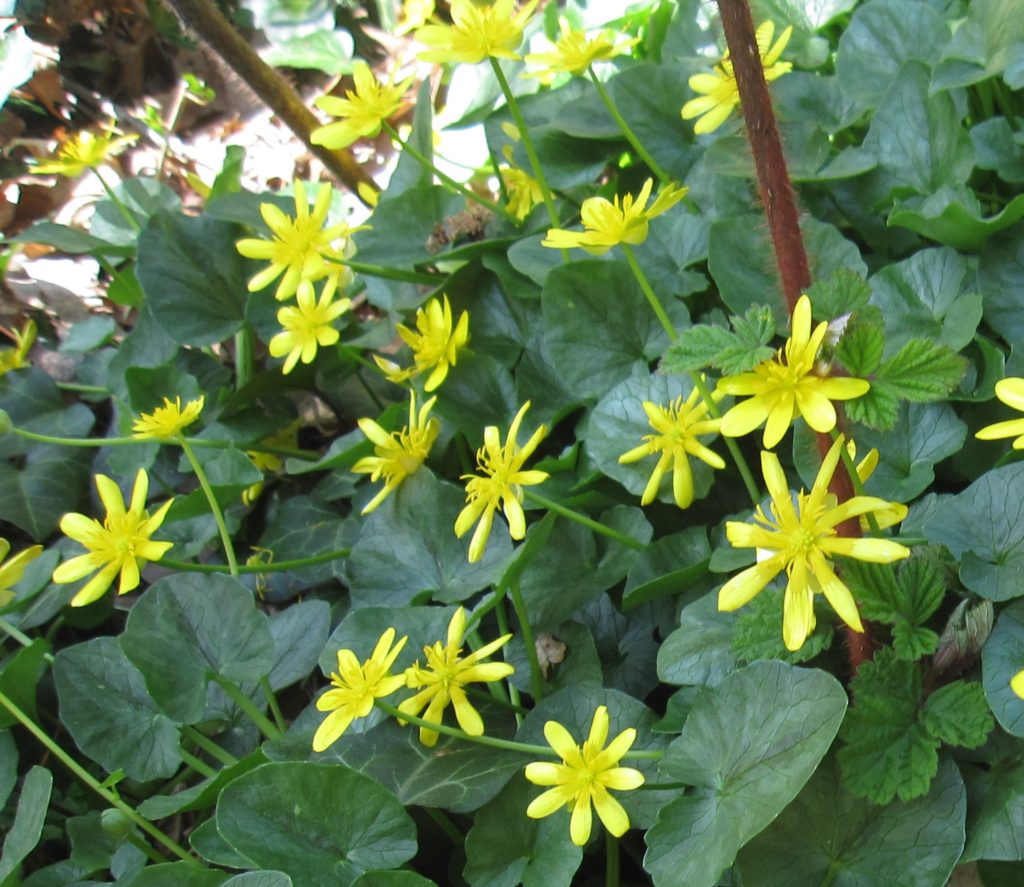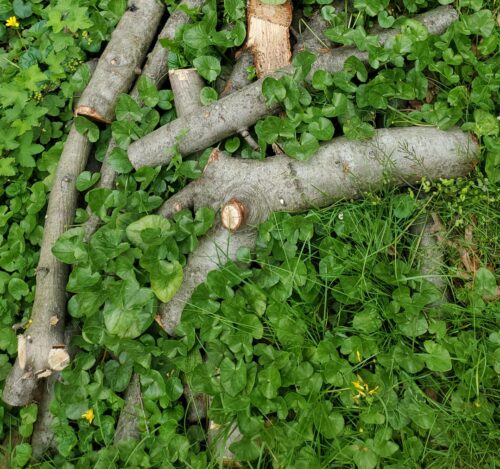Hover over images for detail:

Lesser Celandine, also known as fig buttercup, is a very invasive perennial plant. In April, the beautiful 9-petaled bright yellow buttercup flowers of this plant cover lawns, hill sides, stream banks, bogs, and any place where ground cover can grow, to out-compete native plants.
Uprooting one of the multi-stem plants reveals the cluster of tubers that identify this native European invasive. A website search discovered that this recent, fast-growing plant is exploding here in the Northeast, and is out-competing our quickly shrinking diversity of native plants that would emerge in April if given a chance.

Inspired by author Charles Dowding’s No Dig book, one of my readers submitted a photo of his lesser celandine and explained that as soon as he saw it in the late winter (February/March) he covered the area with multiple levels of overlapping cardboard (cleared of tape) until a specific colony was unable to get sunlight…If he saw any plants popping out, he would simply add more cardboard. To this, he layered compost over the cardboard and planted into that. He states that this method worked “great” for him. Alternatively, Dowding covers and staples larger areas with black plastic into which he cuts openings and plants his crops. After harvesting, he removes the plastic for reuse.

How to remove lesser celandine: Start to hand-pull the plants as soon as they can be identified and before they set seed or form bulbils. The stems of the heart-shaped leaves, which may be solid green or with deep plum blotches, can be easily grabbed at the ground, and gently yet firmly wiggled and slowly pulled to uproot the tubers. If the ground is compact, use a hand weeder garden tool, and be sure to dispose of the tubers, since they can quickly regrow.
If the ground is too compact, water it or wait until it is damp to remove the tubers. It takes a while to do this, but definitely worth the effort. Listen to an audiobook or podcast, and the time will fly. Then plant some native herbaceous plants like Dutchman’s Breeches, Virginia Bluebells, Trillium, and Trout Lilies.
